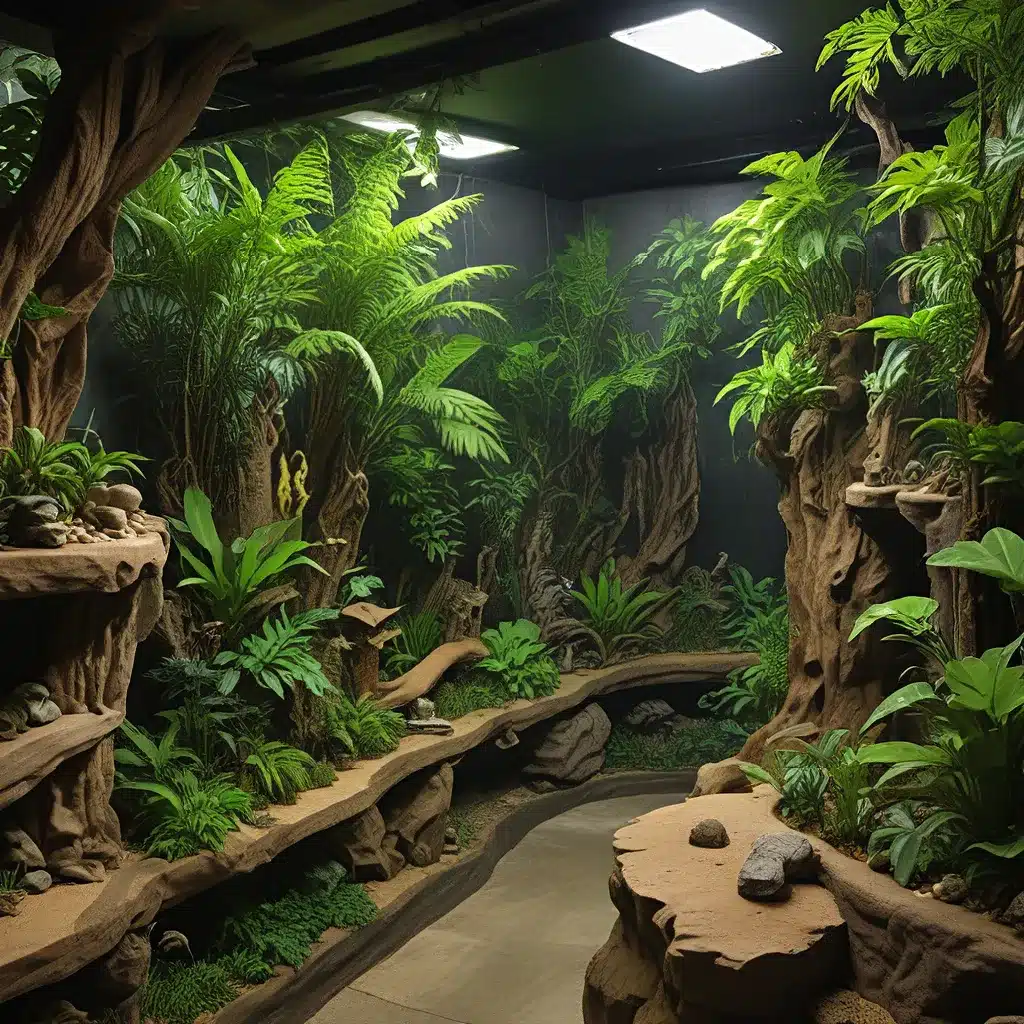
Unlocking the Secrets of Exotic Pet Habitats: A Journey into the Wild
Bringing an exotic pet into your home is an adventure like no other. Stepping into the realm of these captivating creatures, you embark on a journey filled with wonder, responsibility, and a deep appreciation for the intricate balance of nature. As an exotic pet owner, one of your most crucial tasks is to provide your beloved companion with an environment that mirrors their natural habitat as closely as possible. This is the key to ensuring their health, happiness, and well-being.
Understanding the Needs of Your Exotic Pet
Before you can create the perfect habitat, you must first understand the unique needs of your exotic pet. Each species hails from a distinct environment, with its own set of requirements when it comes to climate, temperature, humidity, vegetation, and more. Delving deep into the research, you’ll uncover the secrets of your pet’s natural surroundings, forming a solid foundation upon which to build their new home.
Unveiling the Mysteries of their Native Habitats
Imagine, for a moment, the lush rainforests of the Amazon, teeming with vibrant flora and fauna. This is the realm of the exotic tree frog, its delicate skin absorbing the moisture-laden air, its fingers clinging to the verdant canopy. Or picture the vast, arid deserts of the Southwest, where the rugged-yet-graceful desert tortoise roams, adapted to thrive in the scorching heat and sparse vegetation.
Understanding these natural habitats is the first step in replicating them within your home. By delving into the details of your pet’s native environment, you’ll uncover the key elements that will ensure their comfort and well-being.
Selecting the Appropriate Enclosure
With your newfound knowledge of your exotic pet’s habitat, the next step is to choose the perfect enclosure. The size, material, and design of this space will have a profound impact on your pet’s ability to thrive. Some species, like the arboreal gecko, may require ample vertical space to climb and explore, while others, like the burrowing hedgehog, may prefer a more expansive horizontal layout.
Carefully research the specific requirements of your pet, taking into account their size, activity level, and natural behaviors. This will guide you in selecting an enclosure that provides the ideal balance of comfort and enrichment.
Recreating the Perfect Environment
Once you’ve chosen the perfect enclosure, the real magic begins. It’s time to transform this space into a haven that mirrors your exotic pet’s natural habitat, down to the smallest detail.
Lighting and Temperature: The Pillars of Habitat Design
Lighting and temperature are two of the most critical components of any exotic pet’s habitat. These elements can make or break the delicate balance that your pet requires for their health and well-being.
For example, certain reptiles, like the bearded dragon, rely on specific UVB lighting to properly metabolize calcium and support their overall health. Maintaining the right temperature gradient within the enclosure is also vital, as it directly impacts your pet’s digestion, activity, and comfort.
Investing in high-quality lighting and heating equipment is a must, as it ensures your pet’s environment remains comfortable and appropriate for their needs.
Substrate Selection: The Foundation of their Home
The substrate, or the material that lines the bottom of the enclosure, is another crucial element in replicating your exotic pet’s natural habitat. Substrates can serve multiple purposes, such as providing a comfortable surface for walking, aiding in maintaining the correct humidity levels, and even facilitating natural behaviors like burrowing.
Researching the best substrate options for your pet’s species is essential. Whether it’s the soft, moisture-retaining cypress mulch for your leopard gecko or the coarse, sandy substrate for your desert-dwelling tortoise, getting this element right is key to creating a habitat that truly feels like home.
Enrichment: Fostering Natural Behaviors
Exotic pets are not simply decorations to be admired; they are living, breathing creatures with complex needs and natural behaviors that must be nurtured. Providing enrichment within their habitat is a surefire way to keep your pet mentally stimulated, engaged, and thriving.
Incorporate toys, climbing structures, and hiding places that encourage your pet to explore, play, and exhibit their natural instincts. These elements not only satisfy their innate curiosity but also help reduce stress and promote overall well-being.
Maintaining the Perfect Habitat
Creating the perfect habitat is an ongoing endeavor, requiring diligent attention and regular maintenance. Establishing a routine for cleaning, disinfecting, and replacing substrates is crucial to ensure your pet’s environment remains hygienic and safe.
Proper habitat maintenance also helps prevent the growth of harmful bacteria, safeguarding your pet’s health and well-being. By dedicating time and effort to this essential task, you’ll be rewarded with a thriving, happy exotic companion.
Seeking Expert Guidance
Navigating the world of exotic pet habitat design can be a daunting task, especially for first-time owners. But fear not, there are resources and experts available to guide you every step of the way.
Consulting with a veterinarian who specializes in exotic animals can provide invaluable insights on enclosure design, lighting, temperature, and other key factors. Additionally, connecting with online communities and forums dedicated to exotic pet care can offer a wealth of knowledge and support from experienced owners.
Remember, creating the perfect habitat for your exotic pet is a labor of love, but the rewards are endless. By dedicating yourself to this endeavor, you’ll not only ensure the health and happiness of your companion but also forge a deeper connection with the wonders of the natural world.
So, embrace the challenge, unleash your creativity, and embark on a journey to design the ultimate exotic pet habitat. Your furry, feathered, or scaly friend will thank you for it.

